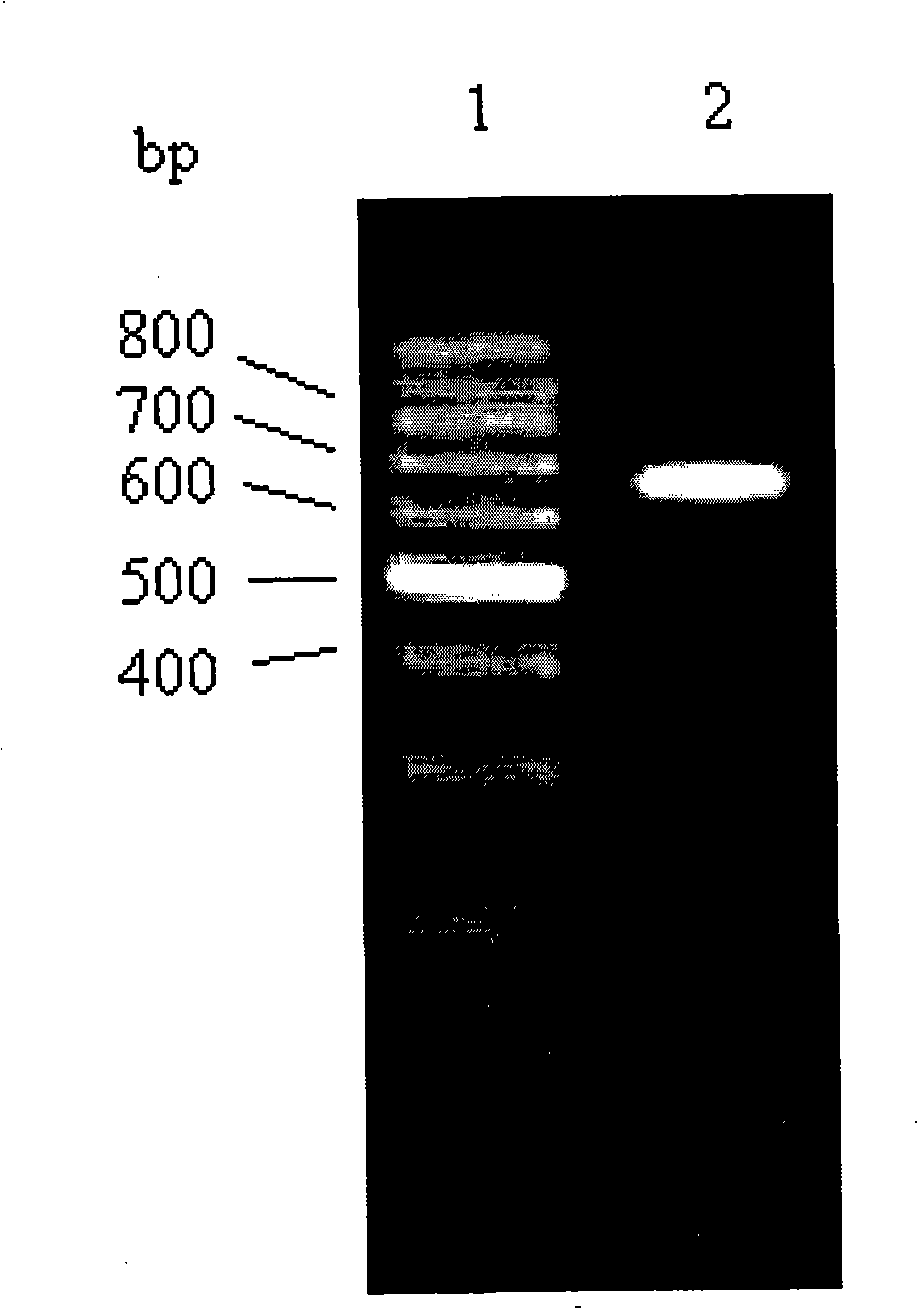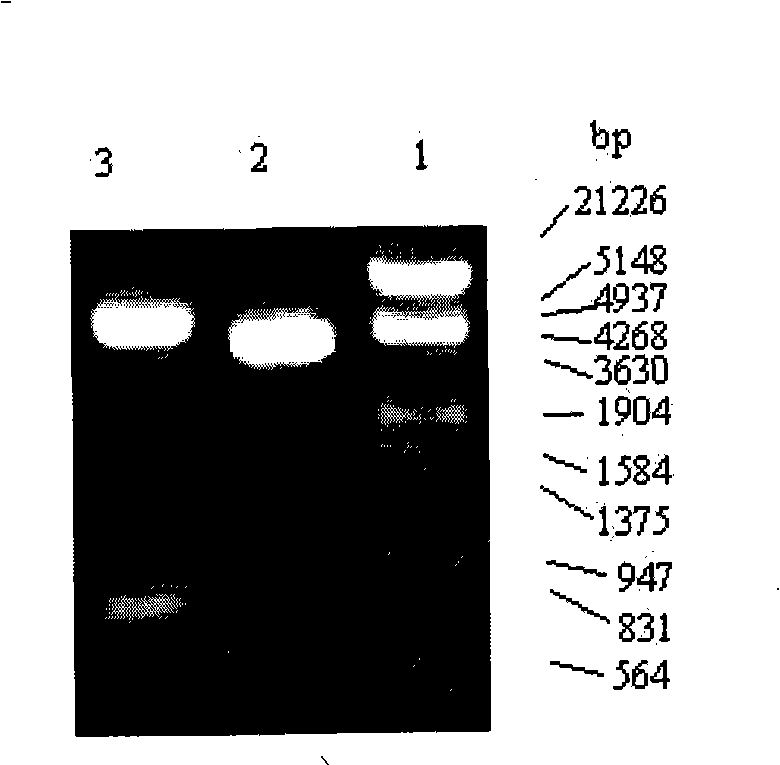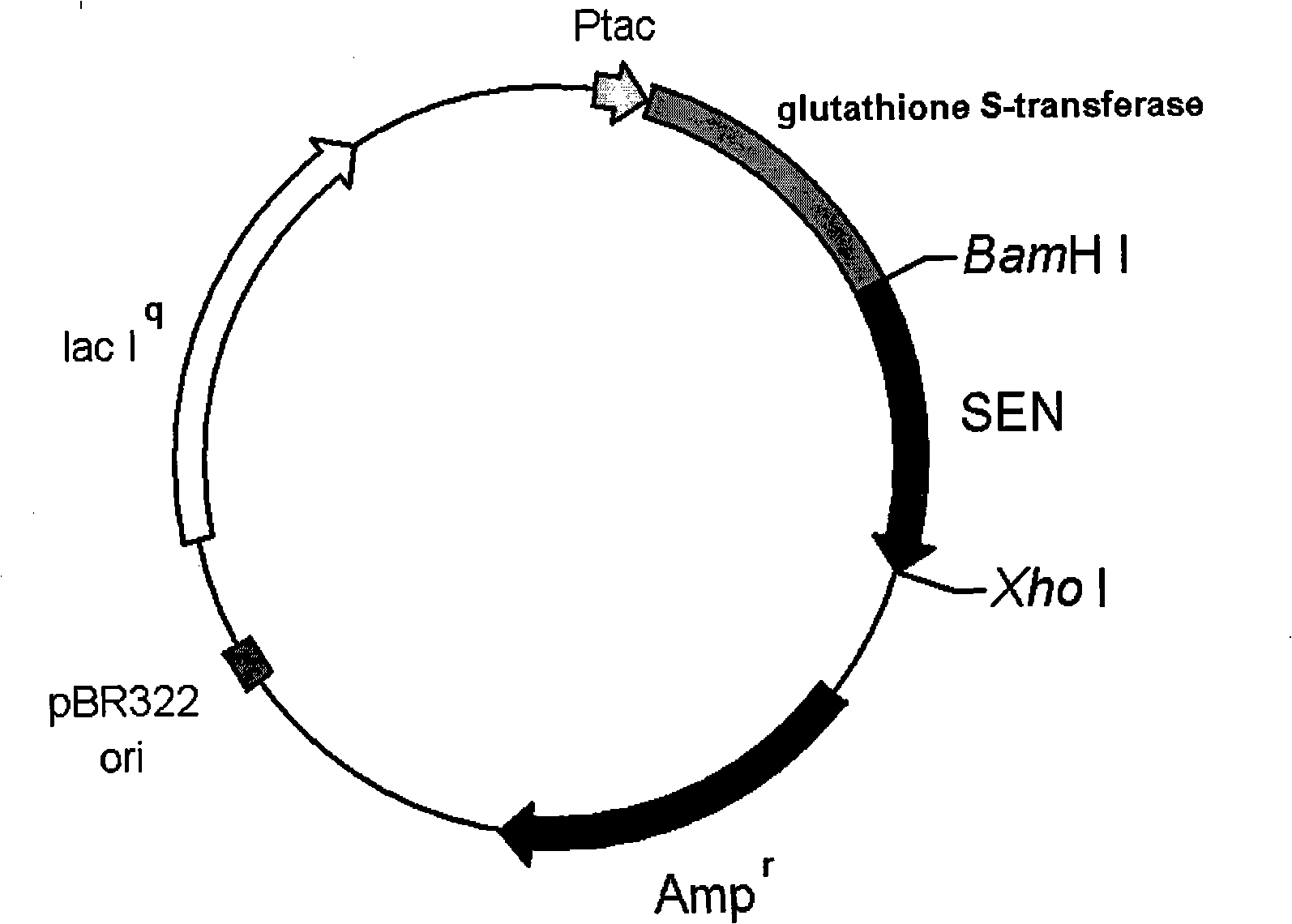Recombined staphylococcus aureus enterotoxin N oral preparation and application thereof
A technology of Staphylococcus aureus enterotoxin and Staphylococcus enterotoxin, applied in the field of bioengineering, can solve problems affecting product purity, activity and quality, instability between batches, and simplicity
- Summary
- Abstract
- Description
- Claims
- Application Information
AI Technical Summary
Problems solved by technology
Method used
Image
Examples
Embodiment 1
[0046] Example 1: PCR amplification of the gene sequence encoding the mature peptide of SEN protein containing restriction sites:
[0047] Design the following primer sequences:
[0048] SEQ ID NO.3: gga tcc gaa gta gac aaa aaa ga (the underlined part is the restriction site of BamH I)
[0049] SEQ ID NO.4: ctc gag ata atc atc aat cac tta (the underlined part is the Xho I restriction site)
[0050] The genome of Staphylococcus aureus (FRI 1230) was used as a template to amplify the mature peptide gene fragment sen of Staphylococcus aureus enterotoxin SEN;
[0051] The PCR amplification conditions are as follows, the gene fragments encoding the mature peptide of SEN are amplified, wherein each gene fragment has a BamH I restriction site at the 5' end, and an Xho I restriction site after the terminator at the 3' end.
[0052] PCR system:
[0053] h 2 O: 60 μL
[0054] Buffer(10×): 10μL
[0055] Mg 2+ (25mmol / L): 8μL
[0056] BSA (5mg / mL): 10μL
[0057] Primer-up ...
Embodiment 2
[0068] Example 2: Construction of the recombinant plasmid pGEM-T-SEN encoding enterotoxin SEN protein mature peptide gene sen containing restriction sites:
[0069]The gene fragment encoding the mature peptide of SEN protein with restriction sites obtained by PCR amplification was cloned into the pGEM-T plasmid to construct the pGEM-T-SEN recombinant plasmid, and the above recombinant plasmid was transformed into E. coli DH5α for amplification. The above recombinant pGEM-T-SEN plasmid was extracted, identified by enzyme digestion, and then sent for sequencing. The sequencing results showed that the gene sequence encoding the mature peptide of the SEN protein with the enzyme digestion site obtained above was different from the corresponding gene sequence on GenBank except at the 5' The rest of the site is completely consistent except for the addition of a restriction site. The amino acid sequence of the corresponding enterotoxin N mature peptide has only two more amino acids (Gl...
Embodiment 3
[0070] Example 3: Construction of pGEX-4T-1-SEN recombinant expression plasmid containing the gene encoding SEN mature peptide with restriction sites:
[0071] The pGEM-T-SEN recombinant plasmid and pGEX-4T-1 plasmid obtained in Example 2 containing the gene fragment encoding the mature peptide of the SEN protein obtained in Example 2 were respectively digested with BamH I and Xho I. The gene fragment encoding the mature peptide of SEN containing the restriction site and the large fragment of the digested product of the pGEX-4T-1 plasmid after digestion were recovered and ligated to construct the expression plasmid pGEX-4T-1-SEN. The above-mentioned recombinant expression plasmid was transferred into Escherichia coli DH5a to amplify and extract the plasmid. After digestion and identification by BamH I and Xho I, the result showed that the target gene fragment had been inserted into the vector plasmid. The electrophoresis results are shown in Figure 3, lane 1 in the figure: nucl...
PUM
 Login to View More
Login to View More Abstract
Description
Claims
Application Information
 Login to View More
Login to View More - Generate Ideas
- Intellectual Property
- Life Sciences
- Materials
- Tech Scout
- Unparalleled Data Quality
- Higher Quality Content
- 60% Fewer Hallucinations
Browse by: Latest US Patents, China's latest patents, Technical Efficacy Thesaurus, Application Domain, Technology Topic, Popular Technical Reports.
© 2025 PatSnap. All rights reserved.Legal|Privacy policy|Modern Slavery Act Transparency Statement|Sitemap|About US| Contact US: help@patsnap.com



